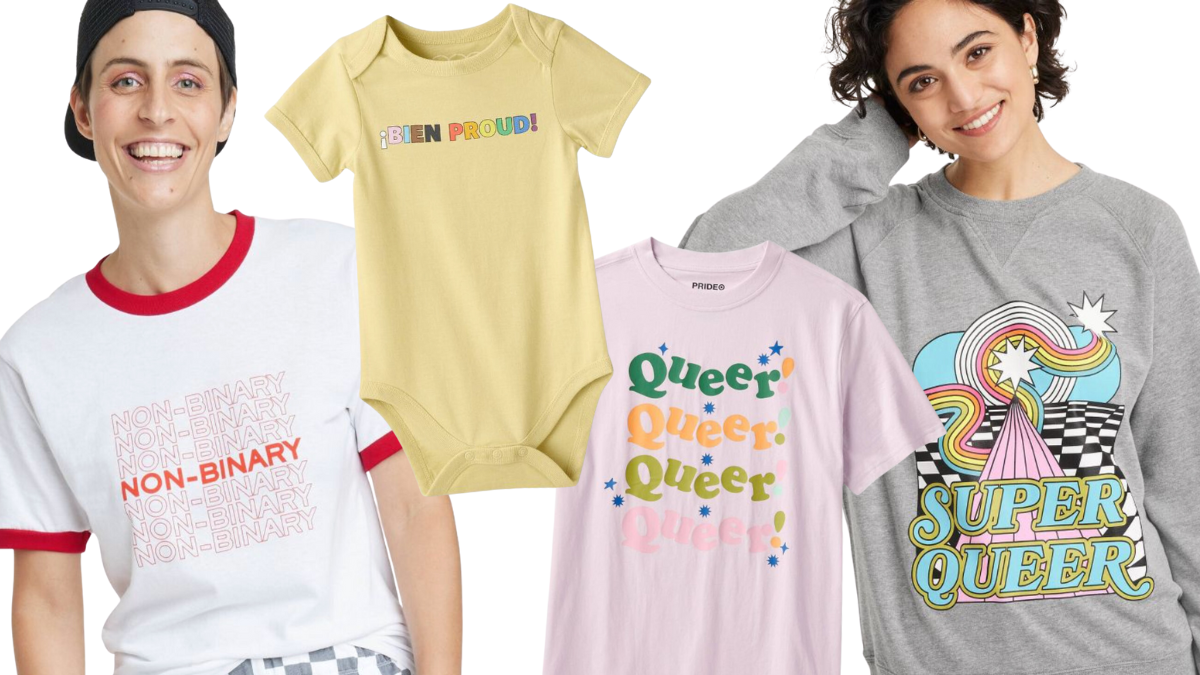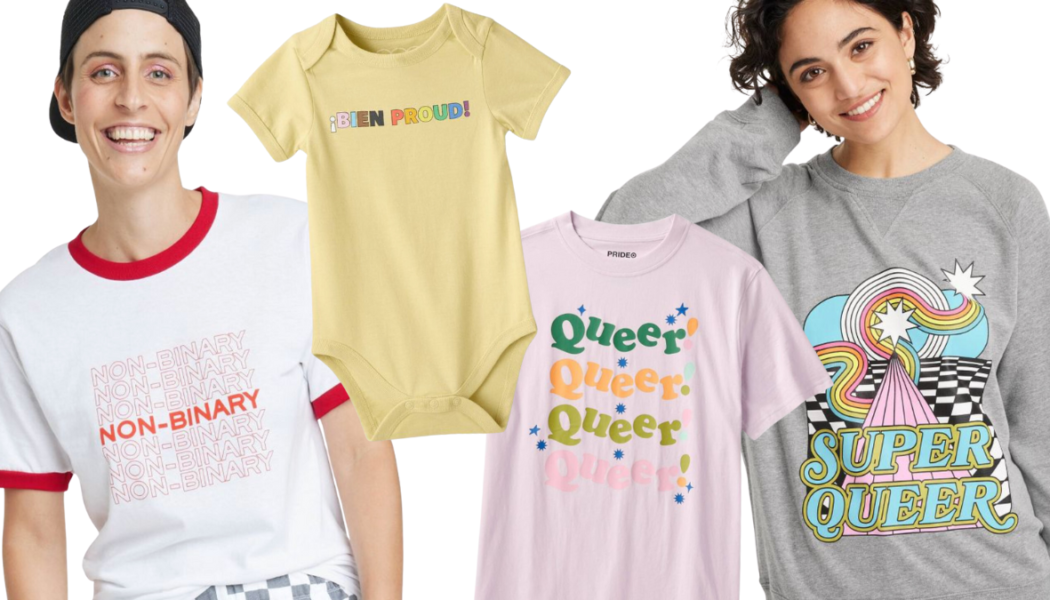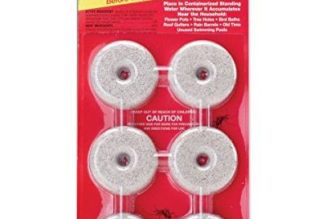
Prepare yourself: There’s ample rainbow-washing ahead. We got our first peek into the consumerist goodies available for June’s LGBT Pride Month with the newly released capsule collection from Target. This lineup includes kitschy graphic tees with slogans such as “They She He” (featuring cartoon images of naked people), “Trans Pride Trans Power,” “Trans People Will Always Exist,” and “Queer! Queer! Queer! Queer!” Sure, that just looks like harmless junk for adults, but these items were also designed for and are now marketed to babies, toddlers, kids, tweens, and teens.
Need to pick up a book or two on your Target trip to keep your hyperactive toddler busy? How about the “Bye Bye, Binary” board book with the tagline “Nobody puts baby in a pink or blue corner!” Or “The Pronoun Book,” a board book that one reviewer online says is a “wonderful way to explain different pronouns to babies.” Target isn’t shy about putting propagandistic books on its shelves while removing those that go against its narrative (recall Target removing Abigail Shrier’s well-researched, evidence-based book, “Irreversible Damage,” from stores).
For wearable goods, there’s a “Pride Baby Bien Proud Body Suit” for your newborn. Target even had to make sure its Spanish-speaking consumers were included in its trans indoctrination; the garment’s rainbow lettering reads “¡Bien Proud!”
I’m not convinced a young toddler has any sense of what the phrase “¡Bien Proud!” even references or would pick that out of his own volition. Rather, this feels more like Target wants parents to use their children as walking (or even crawling) billboards to affirm activists’ identities and ideologies.
However, your teen has likely been through our modern school system and, at this point, probably knows all the ins and outs of gender ideology. To signal those newfound values, he or she might want a “Queer All Year” beanie or perhaps a “Super Queer” color-block bucket hat. If he or she is looking to decorate a bedroom, what’s not appealing about an “Ask Me About My Pronouns” wall poster, or one that reads “No Gender? No Problem!”? Among other adolescent-baiting quips, your teen could pick up a “Gender Euphoria” candle or one that reads “English 101” with speech bubbles that say “he,” “she,” “ze,” and “they” to adorn their desk.
But why would your teen — potentially dealing with dysphoria — opt for an unflattering, curve-clinging romper when she could instead relax in a matching sweat set that reads “Not A Phase”? On that note, is there anything wrong with adolescents going through identity exploration phases? We all went through phases growing up — I had my own tomboy phase — so what’s the deal with our apparel suggesting to kids and teens that innocent “phases” are in fact permanent? This can be especially true of adolescents with autism, as their typical hyperfixations can also apply to sex-related identity obsessions.
I fully sympathize with young girls wanting to disguise their bodies in ways that look dissimilar to their female peers. When I was a teenager, I struggled to come to terms with my developing body and rejected most commercially available feminine clothing. Whatever I could wear to minimize my chest and hide my curves took precedence over exploring a feminine identity. But that’s nothing new; people from all walks of life have felt discomfort about their bodies.
As a self-titled “internet kid,” I logged far too many hours on websites like Tumblr, where gender ideology seeped in from academia and began its destructive spread through mainstream culture. I can recall my online friends microblogging about binding their chests. We all cut our hair short because we were not like other girls — or so we said. But at that time, teen girl rebellion against societal norms wasn’t institutionalized and commodified quite like it is today. Furthermore, the state of youth mental health has declined since then, with 42 percent of my generation, Gen Z, having a diagnosed mental health condition.
Today, it appears there are large swaths of powerful adults and corporations actively promoting gender dysphoria, turning a profit off of innocent vulnerabilities, and encouraging highly impressionable youth to seek out procedures that irreparably harm their bodies and minds. Don’t just take it from me, take it from the vocal left-wing voices who coined terms like “pink capitalism” or “rainbow capitalism,” referring to brands that commercialize “pride”-themed products for profit.
But what Target’s doing with its latest line is worse. It’s promoting an ideology that actively leads children to medicalize the natural insecurities they face, through the use of puberty blockers, wrong-sex hormones, and irreversible surgeries. Recall also that last year, Target actually released compression tops, a style of undergarment that mimics a chest binder, among its other products for “social transition” like packing underwear (“packer not included”) and tucking underwear.
Sure, Target may pride itself on labeling its products with an “LGBTQ+ Owned” icon to discern which brands are founded or owned by LGBT-identified people, but something feels sickeningly off-kilter about corporations profiting off the backs of vulnerable teens. These children and teens deserve productive therapeutic treatment and room to safely explore, not a marketing ploy that exploits their insecurities.
Andrea Mew is the storytelling coordinator at Independent Women’s Forum (iwf.org).







